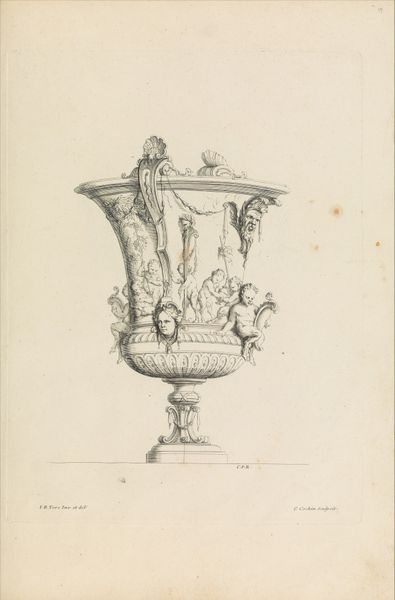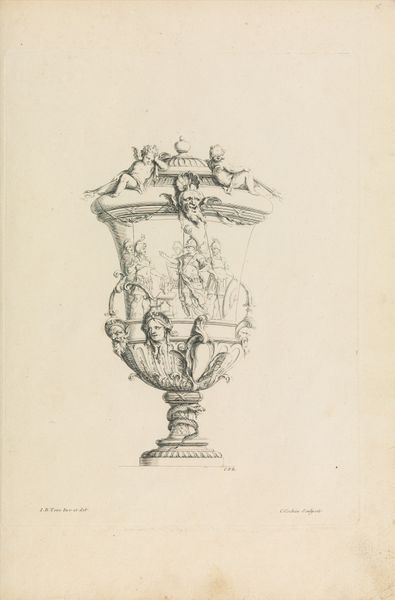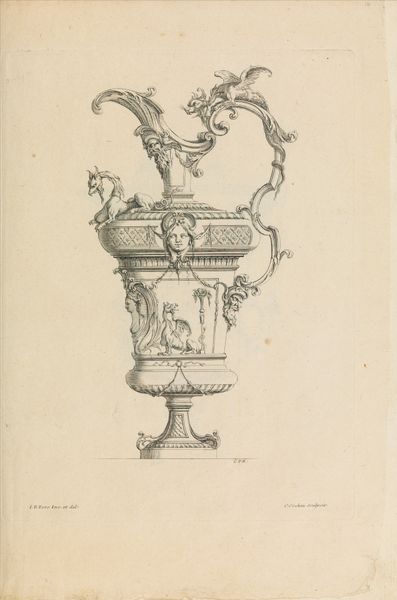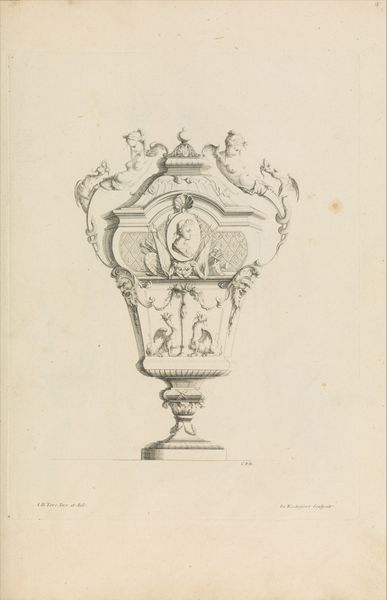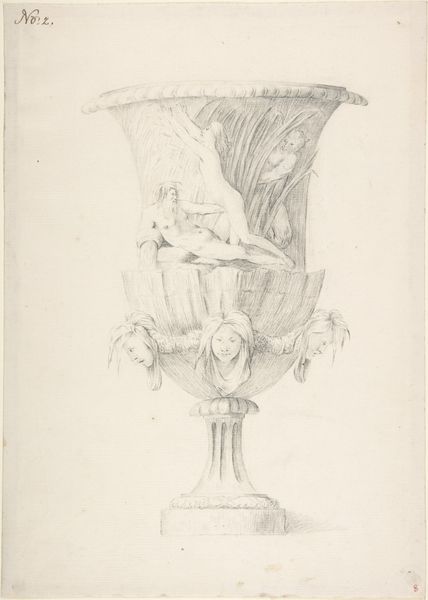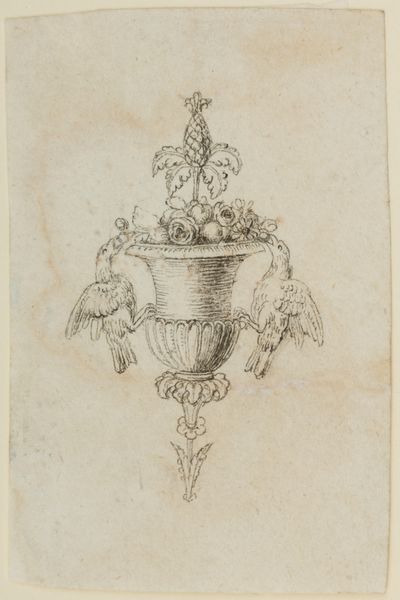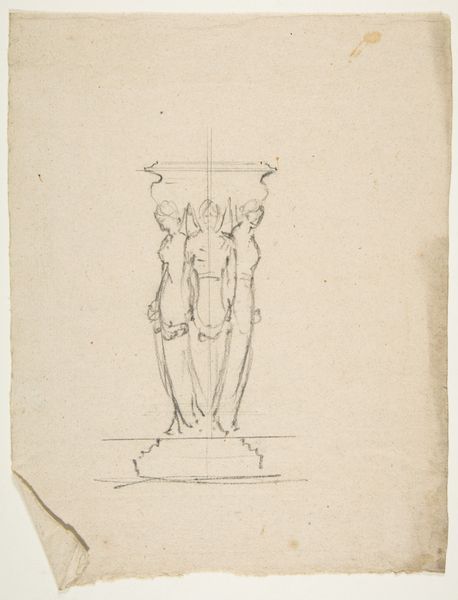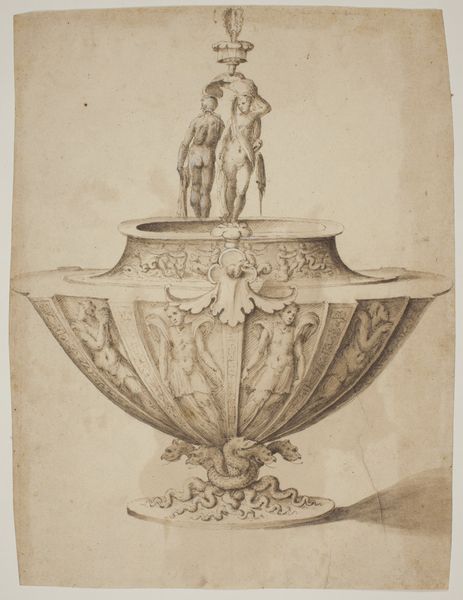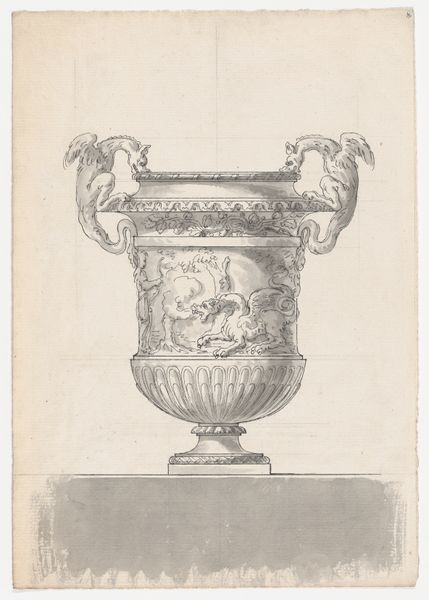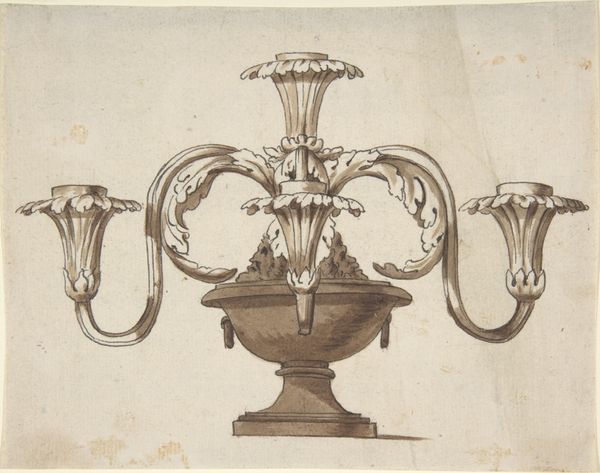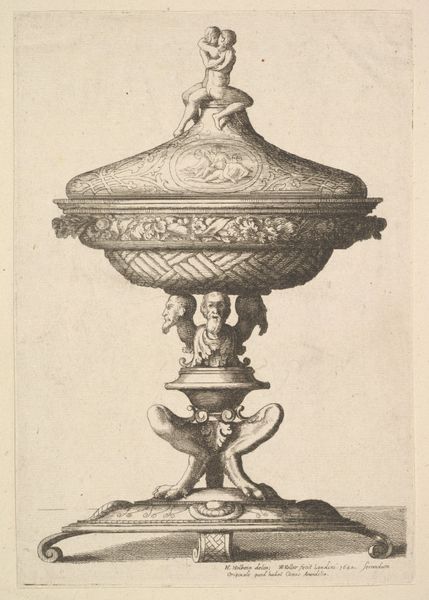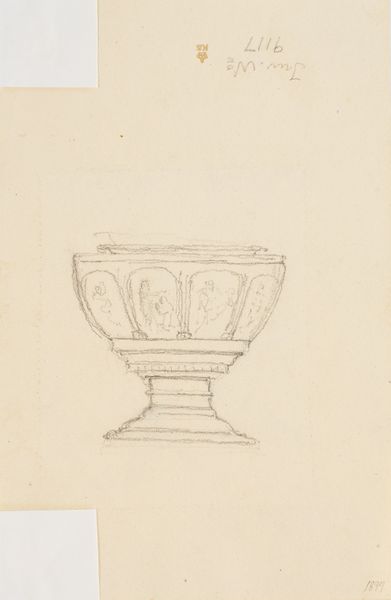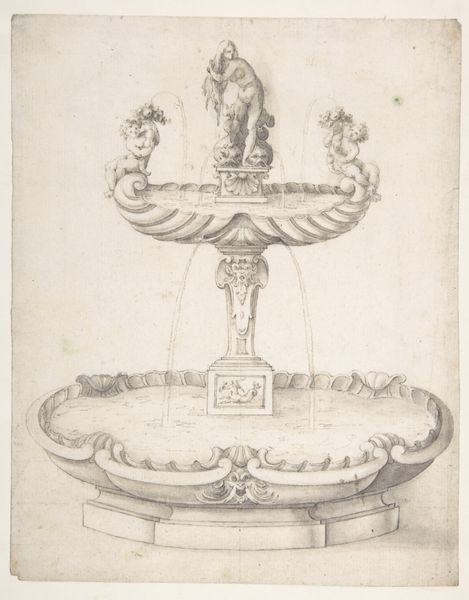
drawing, print, etching
#
drawing
#
baroque
# print
#
etching
#
vase
#
decorative-art
Dimensions: Plate H: 12 5/16 in. (31.2 cm); W: 9 1/4 in. (23.5 cm); Sheet H: 16 1/4 in. (41.3 cm); W: 11 1/4 in. (28.5 cm) [irregular edges]
Copyright: Public Domain
Editor: This is Jean Bernard Toro’s “Nouveau Livre de Vases,” a drawing and etching from 1716. It's incredibly ornate; the etching technique makes the vase look so delicate. How would you interpret this work, seeing it here in the Met? Curator: The image presents a baroque sensibility celebrating excess, privilege and power, right before the dawn of the Enlightenment and revolutions that would upturn those values. What do you make of that tension? Editor: It's strange, I see these cherubs playing so freely, adorning something that I'm guessing was designed for a wealthy household… How do those elements tie together? Curator: Exactly! Those details provide insight into the performative aspects of wealth and the innocence of childhood in contrast to the realities of labor and class disparity at the time. Consider, also, the decorative arts as a gendered field-- what statements do the design and gender associations of the work convey about its place in that period? Editor: I hadn't thought about gender playing a role, but I see your point, with the cherubic figures and ornate detail! I'm also struck by how an object meant for display also has this embedded critique within it. Curator: This tension between beauty, social context and purpose offers fertile ground for exploring not just the artwork itself, but also the society that produced and consumed it. So much is happening just below the surface. Editor: I agree, this tension between overt beauty and potential critique completely changes how I see it now. Thanks so much! Curator: Indeed. Considering the original socio-political context provides another richer layer to appreciating it.
Comments
No comments
Be the first to comment and join the conversation on the ultimate creative platform.
